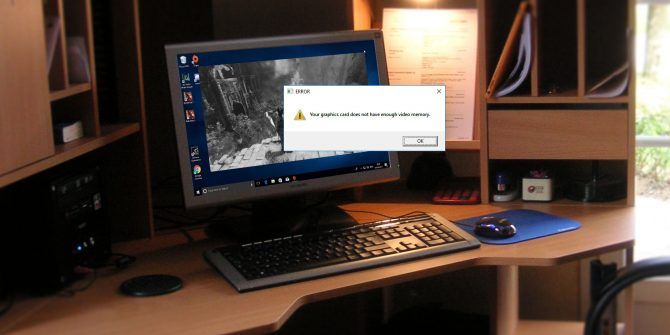Are you pulling your hair out because your PC has slowed down to a crawl? Perhaps you should head over to the task manager and see if this has something to do with a file named WUDFHost.exe. Many users complain that this file has been hogging the CPU.
If that’s the case with you, don’t panic. The Windows User-mode Driver Framework Host (WUDFHost.exe) is a trustworthy system process. You may have contemplated killing the process, but it’s an important component of your OS. So, let’s explore how to reduce WUDFHost.exe’s high CPU usage.
1. Check Your System for Viruses and Malware
While the real WUDFHost.exe file is perfectly safe, some viruses and malware may masquerade as it to sneak past your antivirus program. An immediate giveaway that the file is a trojan is if the file is located anywhere but in the C:WindowsSystem32 folder.
If you notice this, run a scan using your antivirus program. You can even scan your computer for malware offline with Windows Defender.
Hopefully, the program will remove the infected file. When you’re done, return to the Task Manager and verify if the CPU usage has returned to normal.
2. Check for Device Driver Updates
Once you’ve determined that the WUDFHost.exe file is safe and not a virus, you’ll need to check for device driver updates. Corrupt or outdated device drivers are one of the most common reasons for the WUDFHost.exe’s excessive usage of CPU.
There are several ways to find and replace outdated Windows drivers. The easiest way is to use the Windows Update. This is the safest method since all drivers are authentic and verified for compatibility. Alternatively, you could go to the Device Manager, find your device, right-click on it, and select Update driver.
A dialog box will appear with two options. If you want Windows to search for a driver, choose the first option that reads Search automatically for updated driver software.
If Windows fails to find a driver, or if you’ve already downloaded the driver onto your system from the manufacturer’s website, use the second option that reads Browse my computer for driver software. Locate the file and run the installation wizard. Perform a reboot and see if your CPU usage has normalized.
3. Check the System File for Corruption
You can check the system file for corruption using a built-in Windows utility called System File Checker. To open System File Checker, run command prompt as an administrator by pressing Win + R, typing cmd, and pressing Ctrl + Shift + Enter. Then, run the following command:
sfc /scannowPress Enter and the utility will start scanning the system files and perform repairs where necessary. Once the process completes, open your Task Manager and see if the CPU usage has returned to normal.
4. Disable the Intel Wireless Gigabit User Mode Driver
Another common culprit that causes the WUDFHost.exe to use excessive CPU is the Intel Wireless Gigabit User Mode driver. The fix, though, is fairly simple.
Press Win + R, type devmgmt.msc, and press Enter or click OK.
This should open the Device Manager. Search for Intel Wireless Gigabit Drivers in the list of drivers, and click on the arrow beside it to expand the category.
Right-click on Intel Wireless Gigabit User Mode Driver and click on Disable device. Click Yes to continue. Return to the Task Manager to see if this resolves the issue.
5. Perform a Clean Boot
Software conflicts could also result in a CPU-hogging WUDFHost.exe. If you recently installed a new program on your system, try uninstalling or disabling it temporarily to see if this fixes the problem. If you didn’t install any new software, you could perform a clean to identify which software is causing the issue.
Press Win + R, type msconfig, and press Enter or click OK. This will open System Configuration. Next, head over to the Services tab, and check the box at the bottom that reads Hide all Microsoft services. Then click Disable all.
Navigate to the Startup tab next and click on Open Task Manager. Disable all the programs listed here.
Return to the System Configuration window and click Apply and OK. Restart your system to apply the changes.
If this fixes the excessive CPU usage, you’ll need to do some trial and error. Start enabling the software and services one at a time to find out which one is the culprit. When you find it, disable it or uninstall it from your system.
6. Disable Any Portable Devices
A portable device may be causing the WUDFHost.exe to use excessive amounts of the CPU’s resources. To verify if this is what’s causing the issue on your system, you can disable portable devices from the Device Manager. Alternatively, you could disable the Device Install Service.
To disable portable devices, open Device Manager by pressing Win + R, typing “devmgmt.msc”, and clicking OK. Look for Portable Devices in the list and click on the arrow to its left to expand the list. Choose a portable device and right-click on it. From the menu, select Disable device and click Yes to continue. Don’t worry, this will not render your device unusable.
When you’re done, return to the Task Manager. Check if this has resolved the high CPU usage problem.
If you want to go a different route, you could disable the Device Install Service. To do this, press Win + R, type “services.msc”, and press Enter or click OK. When the Services window opens, search for Device Install Service. Right-click on it and select Properties.
In the window that pops up, look for the dropdown menu next to Startup Type. Click on the menu and select Disabled. Press Apply and OK. Verify if this resolves your issue by opening the Task Manager.
7. Disable NFC
If your system has NFC, it could be a possible cause for the WUDFHost.exe problem. The simple fix? Disable NFC.
To disable NFC, go to Settings > Network & Internet. On the left pane, look for Airplane mode. Click on it. On the right pane, you’ll see a toggle button to enable/disable NFC. Disable NFC from here and check if the issue resolves.
Is Your CPU Usage Back to Normal?
Hopefully, your WUDFHost.exe is not consuming excessive CPU anymore. The Task Manager is often full of process names that make little sense. If there’s a process using excessive CPU or causing other problems, it can be frustrating. However, don’t kill any processes unless you’re sure it won’t exacerbate the problem.
WUDFHost.exe is but one of many processes you should never kill off due to its importance to the system. It’s worth learning all the important processes in Task Manager so you don’t end up shutting down something vital for your computer’s health!
Read Next
About The Author









